Free Vegetable Images: A Resource for Education
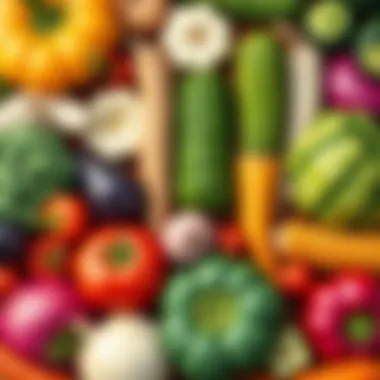
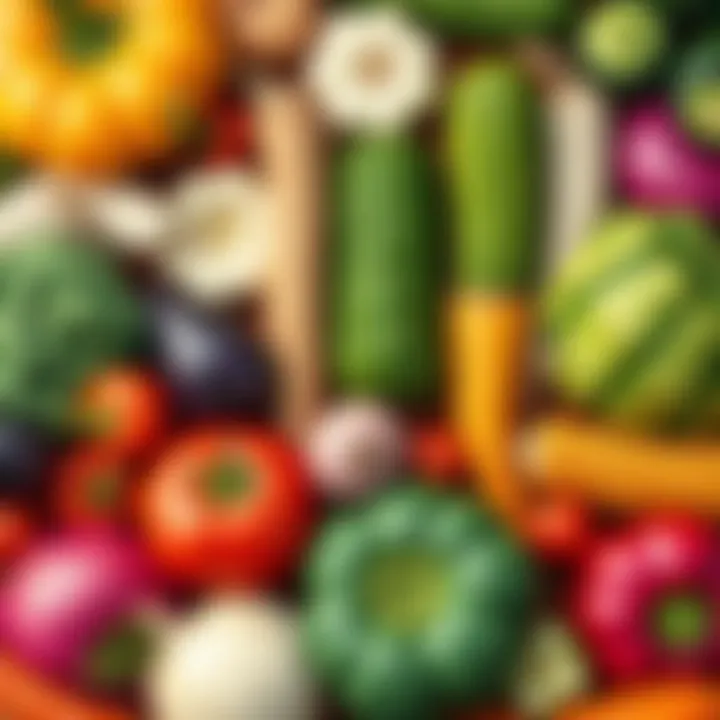
Intro
In recent years, visual aids have become crucial in educational settings. Among these, the importance of free vegetable images cannot be stressed enough. With the rise of health consciousness and the push towards more informed dietary choices, these images serve as a key tool for educators, parents, and children alike. The colorful and diverse world of vegetables can easily capture a child's attention, making learning not only effective but enjoyable.
This article delves into the various platforms where free vegetable images can be found, their significance in nutrition and biology lessons, and the artistic value they bring into classrooms. It is essential to understand not just how to find these resources, but also how to implement them in a way that fosters a love for learning about healthy eating. Here, we will break down the process and highlight the practical applications of these images, all while being mindful of copyright considerations.
Engaging with vegetable-themed imagery can enhance a child's understanding of nutrition, boost their creativity, and enrich their educational journey. Utilizing these resources effectively sets the stage for exploring dietary choices and biological concepts, all while being mindful of the art culture surrounding food.
Join us as we navigate through the topic, providing insights and strategies to help those who are keen on leveraging free vegetable images for educational purposes. Let's begin by exploring interactive methods to make learning engaging and enriching.
Intro to Vegetable Imagery
In an age where visuals dominate our communication, the introduction of vegetable imagery in educational contexts holds significant value. The beauty and diversity of vegetables offer a rich canvas, presenting opportunities to engage learners in a profound manner. This section aims to highlight the role of vegetable images in fostering creativity, enhancing understanding, and promoting nutritional awareness among children and their educators.
The Role of Visual Aids in Education
Visual aids, such as images, charts, and diagrams, are crucial tools in the learning process. They play a vital role in making complex concepts accessible and retaining the attention of young learners. We are wired to respond to visuals, making them powerful in grasping information. In particular, here's how vegetable imagery can serve as an effective visual aid in education:
- Facilitation of Learning: Images foster a deeper understanding of the topic at hand. When children see the vibrant colors and unique shapes of vegetables, they are better equipped to remember details such as their names, nutritional benefits, and culinary uses.
- Stimulation of Inquiry: A well-placed image can spark curiosity and stimulate questions. For example, a picture of a pumpkin can lead to discussions of its growth cycle, its role in various cultures, and its health benefits.
- Diverse Learning Styles: Individual students have different preferences for how they absorb information. Visual aids appeal to those who learn best through sight, making lessons more inclusive.
"A picture is worth a thousand words."
This age-old adage highlights the ability of images to convey information more effectively than words alone. Especially when it comes to the learning journeys of children, incorporating visual aids can make all the difference in how they perceive and interact with the information presented to them.
Why Focus on Vegetables?
Vegetables are not just a cornerstone of healthy eating; they can also introduce a wide array of educational opportunities. Here are a few compelling reasons educators should focus on this subject:
- Nutritional Education: Teaching children about different vegetables helps instill healthy eating habits early in life. Pictures of vibrant vegetables can ignite interest in nutrition and encourage young learners to explore new tastes and food options.
- Biological Concepts: Vegetables serve as fantastic examples for biological lessons on plant life cycles, ecosystems, and biodiversity. By examining images of various vegetables, educators can demonstrate classifications of plant species or delve into topics such as photosynthesis and growth processes.
- Cultural Appreciation: Many cultures have their unique vegetable dishes and farming practices. Discovering images of traditional vegetable-based meals can provide context and appreciation for different culinary traditions, encouraging inclusivity and respect for diversity.
Benefits of Using Vegetable Images
Using vegetable images in education presents several undeniable benefits that extend far beyond just making lessons visually appealing. These images play a crucial role in not only captivating young minds but also enhancing their understanding of various subjects. When incorporated thoughtfully into lesson plans, vegetable images can bridge the gap between abstract concepts and tangible realities, allowing children to connect more deeply with the curriculum.
Enhancing Nutritional Education
Visual aids greatly enhance nutritional education, making healthy eating habits more relatable for children. Images of vibrant vegetables serve as a visual cue that can spur interest in what might otherwise be viewed as mundane lessons about diet. For instance, a colorful picture of a bell pepper can ignite curiosity, prompting students to ask questions about its nutritional value or cooking uses. Moreover, when children engage with realistic depictions of food, it cultivates a sense of familiarity and even encourages them to try new flavors and dishes.
Utilizing images of vegetables can also help teachers convey complex concepts such as serving sizes and portion control. By showcasing images that illustrate proper plate compositions or comparisons between different vegetables, students can better visualize how to balance their meals. This lays a solid foundation for lifelong healthy eating habits, empowering them to make smarter choices about food.
Supporting Biological Concepts
Beyond nutrition, vegetable images significantly aid in teaching biological concepts, particularly in subjects like plant biology and ecology. For younger students, seeing pictures of plants in various stages of growth can elucidate the life cycle of vegetables, making the process of germination to harvest much easier to comprehend. This visual representation acts as a strong mnemonic device, reinforcing their understanding through visual memory.
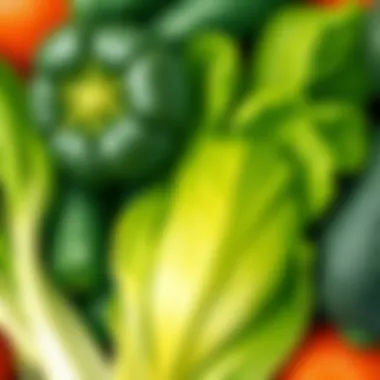
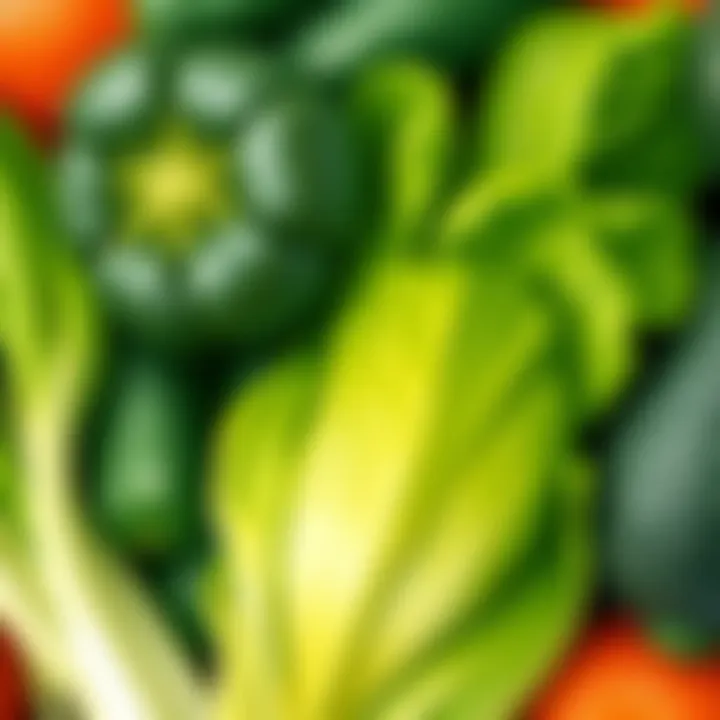
Furthermore, images can foster discussions about ecosystems and the role of vegetables within them. Educators can illustrate concepts like photosynthesis or the importance of pollination using clear, vivid examples. When children visually recognize the connection between plants and the environment, they become more invested in protecting nature and understanding their role within it. Adding images of diverse plant species could also enhance discussions about biodiversity, helping students appreciate the variety necessary for a balanced ecosystem.
Fostering Creativity in Art Projects
Incorporating vegetable images into art projects not only makes learning fun but also fosters creativity among young learners. By using various pictures of vegetables as inspiration, children can create their own artwork, blending creativity with an appreciation of nature. This process allows them to explore shapes, colors, and textures while reinforcing what they’ve learned about healthy foods.
Art activities can range from simple drawing or painting sessions to more complex projects like creating vegetable collages. During these exercises, children can discuss which vegetables they enjoy and how these fit into their meals, blending nutrition discussions with artistic expression. These creative projects can also serve as a springboard for lessons on topics like food waste, gardening, and seasonal eating, deepening their overall education.
Ultimately, the benefits of using vegetable images in education ripple through multiple disciplines, encouraging not just academic learning but also personal development in children.
As such a valuable resource, it's clear that integrating vegetable imagery can yield a rich educational experience that can serve children well as they grow into informed, capable adults.
Finding Free Vegetable Images Online
In today's digital landscape, the availability of free vegetable images is more valuable than ever, especially for educators and parents. Such imagery aids in visual learning, offering a tangible connection to the subject matter that enhances comprehension and retention for children. Incorporating vivid images of vegetables can spark curiosity, making it easier for young learners to grasp concepts related to nutrition, biology, and even creativity in art projects.
The search for effective visual resources shouldn’t be daunting. With the wealth of platforms available, educators can find high-quality images without breaking the bank. By leveraging these resources, teachers and parents can enrich lesson plans, craft engaging activities, and ultimately foster a deeper appreciation for healthy foods.
When seeking free vegetable images, it’s essential to consider several factors, such as the target audience and the educational objective. For example, vibrant, engaging pictures might work best for younger children, while more realistic images suit older students diving into biological studies. Couple this with the understanding of where to find these images, and you have a solid foundation for your educational tools.
Top Websites for Educational Images
- Pixabay
A treasure trove for free images, Pixabay hosts a vast collection of user-contributed photos, including a dedicated section for vegetables. The website allows easy downloads and has no attribution requirements, making it suitable for classroom use. - Unsplash
Unsplash offers a variety of high-resolution images from skilled photographers. Vegetables featured on this site often showcase unique artistic angles, perfect for both educational settings and creative projects. - Pexels
Like Pixabay and Unsplash, Pexels is another platform providing free stock images. The collection of vegetable images is extensive, and the site’s user-friendly interface allows educators to quickly find what they need. - Flickr
While not exclusively for free images, Flickr's advanced search options allow users to filter content by Creative Commons licenses. This feature helps educators discover legally usable vegetable images. - Wikimedia Commons
A reliable resource with thousands of public domain images. The site covers a wide range of vegetables and provides essential details regarding copyright for each image, useful for educational settings.
Evaluating Image Quality
Not all images are created equal, especially when it comes to educational use. Here’s how to ensure you choose high-quality images:
- Resolution Matters: High-resolution images yield better clarity, especially when projected on screens or printed for handouts. A resolution of at least 800 x 600 pixels is recommended for most uses.
- Relevance: The image should be relevant to the educational context. For instance, a photo of brightly colored peppers could be utilized for a lesson on nutrition, while a diagram showing the plant’s anatomy works for biology.
- Color and Composition: Vivid colors can attract children's attention more effectively. Additionally, images with good composition, where the main subject is clear and predominant, tend to yield better engagement in interactive activities.
- Licensing Verification: Always double-check the license of any image. It ensures that you are using it legally, preventing potential copyright issues down the line.
Educational Uses of Vegetable Images
The utilization of vegetable images plays a crucial role in education across various subjects, particularly in conveying concepts related to nutrition, biology, and art. Integrating visual aids like images of vegetables enhances the learning experience, making lessons more engaging and memorable. These visuals not only help students grasp complex ideas but also stimulate their interest in healthy eating habits and environmental awareness. Parents and educators, therefore, find value in sourcing free vegetable images to support their teaching endeavors.
Incorporating Images into Lesson Plans
Cooking Lessons
Incorporating vegetable images into cooking lessons provides an interactive approach to learning about nutrition. It allows students to visually connect with the ingredients they are using. The key characteristic of cooking lessons is the hands-on experience that reinforces the information presented. This practical approach encourages students to explore their creativity in the kitchen. A unique feature of using vegetable images in this context is the ability to demonstrate how different vegetables can be prepared and presented. However, one must ensure that students have access to the actual ingredients and the necessary skills to use them, making it as much about safety as enjoyment.
Science Projects
Integrating vegetable images in science projects highlights the biological structure and diversity of plant life. This topic captivates students' imaginations, leading them to understand concepts like photosynthesis and growth patterns through visual representation. Science projects often rely on concrete examples to illustrate abstract concepts. A unique aspect here is the visual appeal of vegetables, which can simplify the complexity of plant biology. A potential drawback is that students may focus too much on the aesthetics, overlooking essential scientific principles. Therefore, guidance is necessary to maintain a balance.
Gardening Activities
Gardening activities provide an excellent platform for exploring the life cycle of plants. When paired with vegetable images, they enhance the learning experience by showing real-life applications of botanical concepts. The key aspect of gardening is the movement from theory to practice; students learn by doing. An engaging feature is the visual documentation of vegetable growth which can be examined throughout the gardening process. The main downside is that not all students may have access to a garden or outdoor space, which could limit their interaction with the subject.


Creating Interactive Activities
Matching Games
Matching games that utilize vegetable images offer a fun and effective way to improve memory and recognition skills among children. They engage students in active learning by challenging them to connect images with names and qualities of the vegetables. The key characteristic of these games is the simplicity and versatility in terms of educational application. Each game can be tailored according to age and educational objectives. A unique advantage is the potential for group play, fostering collaboration and teamwork. The downside may be the challenge of ensuring adequate materials for all students, which can require additional resources.
Sorting Exercises
Sorting exercises using vegetable images allow children to categorize vegetables by various criteria such as color, size, or type. This not only reinforces classification skills but also nurtures a deeper appreciation for biodiversity. The main feature of sorting activities is their capacity to develop analytical skills while making learning enjoyable. The advantage is clear: as children sort, they become actively involved in the learning process, gaining insights into nutrition and agriculture. However, teachers need to be cautious about the potential for over-simplifying complex ideas, so a clear framework should be maintained.
Collage Making
Collage making offers an expressive outlet that lets students explore their creativity while reinforcing learning about vegetables. By incorporating various images, children can create visual representations that reflect knowledge learned in class. The key characteristic of this activity lies in the artistic expression it encourages. A notable benefit is that it combines art with educational content, appealing to diverse learning styles. One disadvantage, though, could be the need for materials and a creative framework; teachers might have to plan ahead to ensure that students are adequately prepared to express their ideas effectively and meaningfully.
Legal Considerations in Image Use
Understanding the legal framework surrounding image usage is paramount for anyone seeking to incorporate free vegetable images into educational settings. When it comes to enhancing the learning experience, particularly for children, the last thing a teacher or parent wants is to stumble into legal problems. Familiarity with copyright issues and licenses provides not only peace of mind but also a solid foundation for using visual resources effectively and responsibly.
Understanding Copyright Issues
Copyright is a complex beast, but at its core, it essentially protects the rights of creators. If a person snaps a photo of broccoli, they hold the copyright, meaning they control how that image is used. For educators, this becomes crucial. Using an image without permission can lead to legal entanglements that can take considerable time and resources to resolve. Here are some key points to consider:
- Originality: Copyright applies only to original works that show creativity. So, if a vegetable image is unique enough, it could fall under copyright protection.
- Fair Use: This legal doctrine allows limited use of copyrighted material without permission under specific circumstances, typically for educational or news purposes. However, it is a murky area and varies by situation, which can lead to uncertainty.
- Attribution: Even when a person believes they’re using an image under fair use, giving credit or attribution can often determine the legitimacy of that usage. Sometimes, it’s wise to err on the side of caution.
"To avoid becoming a deer caught in headlights, it’s best practice to stick to images that are clearly marked as free to use or in the public domain."
Creative Commons Licenses Explained
Creative Commons licenses provide a framework that simplifies the cloudy waters of copyright law. They allow creators to share their work while still retaining some rights. For educational use, these licenses can be invaluable. Here's a breakdown of the most common types:
- CC BY (Attribution): Users can share and remix the work as long as they credit the creator. This is the most flexible license and ideal for educational settings.
- CC BY-ND (Attribution-NoDerivatives): This allows for redistribution but not adaptation; the image can be used as-is. It’s perfect if you simply want to include the image in presentations or documents without modification.
- CC BY-NC (Attribution-NonCommercial): With this license, educators can use the image freely but cannot make a profit from it. It’s suitable for classroom activities, ensuring the rights of creators are honored.
- CC0 (Public Domain Dedication): This one is a golden egg. The creator waives all rights, allowing users to do anything with the work without needing attribution. It’s the ultimate freedom when it comes to using images for teaching.
Navigating the rules around image usage can seem daunting. However, with a little research and attention to detail, educators and parents can confidently utilize free vegetable imagery to enrich students' learning experiences while safeguarding against potential legal pitfalls. Educators should also consider checking official sources, such as the U.S. Copyright Office or Creative Commons, to clarify specific questions.
Examples of Successful Vegetable Image Usage
The utilization of vegetable imagery within educational settings has proven to be a transformative approach for enhancing engagement among young learners. When implemented thoughtfully, it can bridge gaps between theoretical knowledge and practical understanding. Let's delve into some compelling cases that illustrate just how impactful these images can be.
Case Studies in Classrooms
In numerous classrooms, educators have successfully integrated vegetable images into their lesson plans. One notable instance occurred in a second-grade science class where an enthusiastic teacher introduced a unit on nutrition. She utilized vibrant photographs of various vegetables, including carrots, broccoli, and bell peppers, to spark interest during discussions about healthy eating. Students were assigned to create posters featuring their chosen vegetable, complete with facts and drawings. This activity not only reinforced the nutritional benefits discussed in class but also allowed students to develop artistic expression and teamwork.
Another fascinating case was in a fourth-grade classroom that focused on plant biology. The teacher used images showing the life cycle of plants, particularly focusing on how vegetables grow from seeds to mature plants. This visual aid helped students grasp complex biological concepts more easily. By reflecting on real images depicting vegetables at different growth stages, students demonstrated a marked improvement in their comprehension and retention of lesson material.
"Visual aids not only capture attention but also solidify understanding," remarks one educator who has seen firsthand how vegetable images have positively influenced her classroom dynamics.
Parent-Child Activities
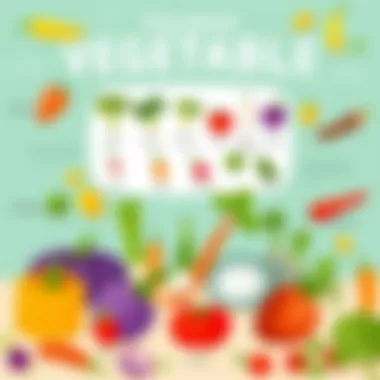
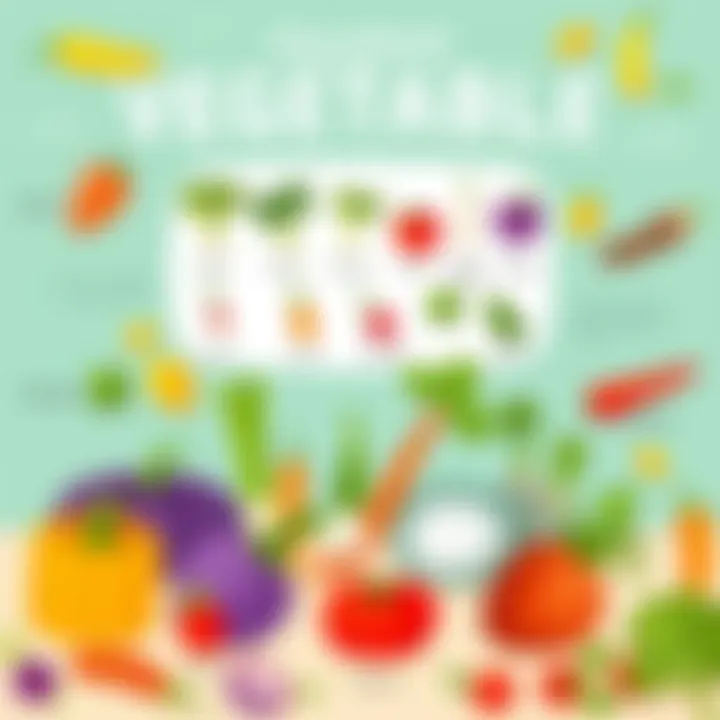
Outside of the classroom, parents can leverage vegetable images for engaging home activities. A simple yet effective project involves turning snack time into a learning experience. Parents can display pictures of various vegetables and ask children to match them with the real counterparts in their lunchboxes. It's a delightful way to teach kids about healthy eating while having fun. This not only nurtures their ability to recognize different vegetables but also instills an appreciation for nutrition from a young age.
Moreover, some parents have found success by incorporating vegetable images into cooking sessions. By showing pictures of ingredients they plan to use, children can learn what veggies are involved in the dishes they’ll make together. It encourages discussions about favorite vegetables, colors, and tastes, transforming meal prep into a rich educational experience.
Engaging with free vegetable images in these classroom and home activities brings a blend of play and education, fostering better understanding and appreciation among children while promoting a healthier lifestyle. As these examples illustrate, the practical use of vegetable imagery serves to engage students cognitively and emotionally, laying the groundwork for lifelong healthy habits.
Future of Educational Images
The realm of educational imagery, particularly with regards to vegetables, promises a vibrant evolution. As technology marches on, the ways in which we access and use images are transforming, offering exciting possibilities for educators, parents, and children alike. Recognizing these shifts can greatly enhance how visual aids support learning. By exploring advancements and trends in this sector, we stand to enrich our educational approaches, making lessons more engaging and productive for young learners.
Technological Advancements in Image Resources
With the rapid pace of technological progress, new tools and platforms are popping up regularly. These advancements are not merely conveniences; they transform how educational content is curated and shared. For instance, various data-driven platforms can now provide high-quality vegetable imagery, tailored to specific educational needs. Machine learning algorithms enable categorizing images by topic, age appropriateness, and educational relevance, allowing educators to find exactly what they need in a fraction of the time.
Moreover, augmented reality (AR) is finding its way into classrooms. Imagine children pointing a tablet at a vegetable image and watching as it comes to life in 3D! This immersive experience not only captivates young minds but also solidifies learning through interaction and engagement. Furthermore, mobile applications can deliver vegetable imagery directly to students at home, ensuring a continuous learning experience outside of classroom hours.
Predicting Trends in Educational Content
As we look ahead, it’s critical to understand emerging trends that will shape educational content.
- High-Resolution Visuals: The demand for higher image quality is ever-increasing. Educators are recognizing that detailed images can help children better identify vegetables and understand their importance in nutrition.
- Diverse Representation: Future content is leaning towards showcasing not just the typical vegetables, but also rare and heirloom varieties. This broadens children's perspectives about food, culture, and biodiversity.
- Interactive Elements: Beyond static images, there's a growing trend toward interactive content—think quizzes and games incorporated directly with the visuals. This maintains student interest and enhances retention.
"Inclusion of diverse, high-quality visuals can transform a simple lesson into an engaging adventure for children."
- Sustainability Focus: As environmental issues gain prominence, educational content related to vegetable use will likely integrate sustainability themes. Lessons about where food comes from and how to grow your own vegetables can lead to a deeper understanding of the subject matter.
- Community-Based Projects: There's a shift towards involving communities and parents in educational projects using vegetable images, including real-life gardening activities, which can strengthen the connection between the classroom and home.
Keeping an eye on these trends can ensure educators remain ahead of the curve, harnessing the power of vegetable imagery to educate and inspire.
As we combine technology with creativity, the future of educational images looks not just promising, but transformative.
The End
The journey through the realm of free vegetable images has underscored their pivotal role in enriching educational experiences. As we've navigated this topic, several key elements have emerged that highlight not just the value but also the practicality of these visual resources.
Summarizing Key Takeaways
One of the most significant takeaways from our exploration is the ability of vegetable images to enhance learning across various subjects. For instance, in nutritional education, vibrant visuals can spark children's interest in healthy eating. When children see colorful pictures of fresh spinach or tomatoes, it's like a dooropening into a universe of flavors and nutrients.
In the context of biological studies, visuals help demystify complex concepts, such as plant anatomy or the growth process. Engaging images can transform a textbook definition into relatable knowledge that connects children with the subject matter. Also, let’s not forget the creative side; art projects inspired by vegetable imagery offer opportunities for creativity, allowing kids to express themselves and learn simultaneously.
Furthermore, understanding how to find and use these images legally is crucial. Navigating copyright and using resources like Creative Commons ensures that educators are protecting themselves while also providing enriching materials for students. Whether one is a teacher crafting lesson plans or a parent preparing fun, educational activities, knowing what’s allowed makes the process smoother and more productive.
Encouragement for Further Exploration
While we’ve touched on numerous aspects related to the use of vegetable images in education, this is merely the tip of the iceberg. I encourage readers to dig deeper into the world of online image resources. Websites like Wikimedia Commons and Unsplash offer diverse collections that can complement any educational theme. Exploring the vast array of vegetable photography available can lead to surprising discoveries and creative lesson inspirations.
Additionally, consider the notion of integrating technology. Perhaps virtual reality apps that feature vegetable growing simulations or augmented reality that brings plant biology to life could be explored to enhance comprehension. The possibilities are endless, and with a little creativity, the educational impact can be profound.
In summary, leveraging free vegetable images not only supports educational content across various disciplines but also cultivates a deeper appreciation for nutrition, science, and creativity in children. Therefore, let’s continue this exploration, looking for ways to innovate and inspire the next generation through the rich imagery that nature provides.















